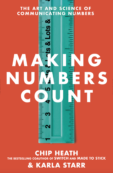Here’s a story we received from Peri Chinoda, an AP & Honors World History Teacher at Hume Fogg Magnet High School in Nashville:
Background Information: In 1885 the Chancellor of Germany, Otto Bismarck, convened a meeting attended by 13 European colonial powers including the USA and the Ottoman Empire. The Africans whose land was to be divided among the Europeans were not invited. The Europeans agreed on a number of things to ease colonization and prevent fighting among them.
Activity:Two or three students were asked to volunteer to bake cakes in the shape of the African continent. On the day of the lesson, I convened the conference with all other students representing European colonial powers and those who baked the cakes representing the Africans.
The âEuropeansâ gathered around arranged conference tables. The Africans were either sent outside the room or made to sit at the corner of the room.
The Europeans cut the cakes and divided the pieces among one another. The âAfricansâ who baked the cakes were not allowed to eat the cakes. They just watched other students eat the products/fruits of their labor.
After this activity: (a) The Europeans/students were to write down how they felt about eating the cakes while the people who baked the cakes were watching. The Africans/students were also to write how they felt when other students ate their cakes and they did not. (b) They were to read about the colonization of Africa, and write an essay reflecting on European Colonization of Africa.
Students talked about this experience for a long time. The lesson stuck on their minds for a long time. Even parents called the school expressing their appreciation for the experience their children went through to understand the process, effects and the moral issues involved in colonization.



